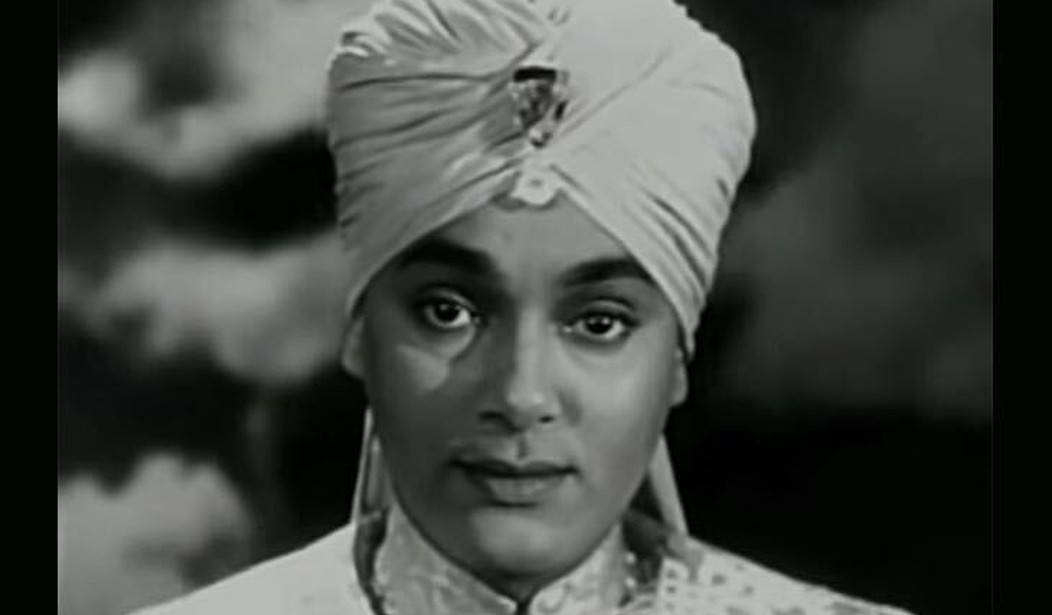The permeating influence of black culture and artists on American popular music in the past 150 years cannot be overstated. Be it directly through authentic legends such as Scott Joplin, Duke Ellington, Count Basie, Robert Johnson, Ella Fitzgerald, Sister Rosetta Thorpe, John Coltrane, B.B. King, Little Richard, Marvin Gaye, Jimi Hendrix, and on to the present day, black artists have either created outright (gospel, blues) or co-created (jazz) America’s soundtrack. Despite vicious and violent racism, the likes of which today’s mollycoddled crybabies cannot even imagine, these artists and many more persevered, rewarding an often dubiously deserving audience with multiple shapes and colors of God’s language. One such artist was John Redd, whose name, unlike the musicians mentioned above, you’ve doubtless never heard.
Which is precisely what he wanted.
Flash back to the 1950s, a time when America was unapologetically proud of its accomplishments in surviving the Great Depression, winning World War Two, and establishing itself as the unquestioned leader of the free world against Soviet tyranny. It was also the decade when television’s status transformed from novelty to ubiquitous, households bursting with ever-increasing numbers of boomer babies gathered around the boob tube upon which nary a boob could be seen. Fiercely creative minds such as Rod Serling and Ernie Kovacs seized the new medium as a vessel for creative outlet not possible in feature film. Others used it as a substitute for nightclubs and dance halls. And others created content that was, shall we say, a bit outside the mainstream.
To America, in the late 1940s and throughout the 1950s, Korla Pandit was both exotic and enigmatic in the extreme. Pandit, the offspring of a French opera singer and an Indian government official, was a child prodigy on keyboards, especially the organ. His talents were furthered by childhood studies in England, with additional enhancement in America after moving here when 12, eventually studying at the University of Chicago.
Pandit first came to public attention in 1949, when a Los Angeles television station first aired Korla Pandit’s Adventures in Music. The show was all music, occasionally interrupted by an unseen announcer telling a brief story leading into Pandit’s next instrumental piece. Pandit took the notion of letting the music do the talking to the extreme, never once speaking on the television show bearing his name. Instead, he focused his energies on the organ, occasionally playing it with one hand while playing piano with the right. Pandit often fixed his gaze directly into the camera, his mysterious man from the East eyes setting housewife hearts a-flutter. In the mid-1950s, Pandit moved to the San Francisco Bay Area. Once there, he revamped the show format, occasionally talking in-between his instrumentals as he espoused spiritual themes of peace and harmony, which were pure manna to the Beatnik movement of the time.
Over the decades, Pandit’s popularity waned. Still, he kept busy with in-person appearances at locations as mundane as pizza parlors, preferably the old-fashioned kind with a small pipe organ in the corner. An appearance as himself in Tim Burton’s 1994 biopic Ed Wood brought career revival, and Pandit enjoyed the spotlight’s return until his passing in 1999. Long before The Beatles introduced the sitar to Western ears and Led Zeppelin brought Northern African influences to its vast audience via “Kashmir,” Korla Pandit adapted Indian scales for Western instrumentation and popularized it.
There is, however, one small problem with the above.
There never was a Korla Pandit.
Remember the name John Redd mentioned earlier? He was a real person, the son of a Baptist minister who served at various churches in Missouri. Redd was a musical prodigy who went to Los Angeles in the late 1930s to pursue music as a career but quickly realized he would never be accepted as a black man in the professional music world. He couldn’t join the musicians union, which was career-killing for any musician at that time. So, he took advantage of being light-skinned and having straight hair courtesy of his mother’s side of the family by passing himself off as Mexican in order to get some gigs. Redd next sat down with his wife, a white woman he had to marry in Tijuana. At the time, all forms of inter-racial marriage were illegal in California. Together, they concocted the Korla Pandit personality he maintained publicly and privately until he passed away. He played the role so well his two sons had no idea their father wasn’t from India.
Korla Pandit’s story could have only happened when it did. No one in this present information-saturated and easy research age could pass themself off as someone they are not for more than five minutes, as Rachel Dolezal and Shaun King have amply demonstrated. We now know more than enough about every culture and creed in existence to preclude someone from giving an appearance of something from faraway without being called out for lack of authenticity. We are also well past the point where a black man has to pretend to be something other than himself to engage a broad audience. For this, we can all be thankful. Yet we can also be grateful that John Redd gave us Korla Pandit. He did no harm, and he gave much joy, which is music’s gift to us, one transcending all race.















Join the conversation as a VIP Member